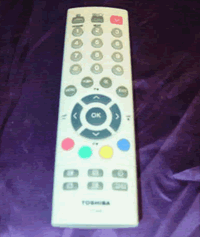Video Games and Interactive Television

You may use this content (better still, argue with me!), but please cite my ideas as (c) 2005, Dr. Bruce Klopfenstein. The following is a draft posting.
Today I saw the article, Advertisers Follow the Audience to Video Games* and it reminded me of yet another catalyst to interactive television: video games. The opportunity video games bring to the adoption and diffusion of interactive television in the United States may seem obvious: video games are by just about any definition, well, interactive.
The real benefit of video games to interactive television may be more transparent, and that is the video game interface. Much research has been conducted on usability and the human-computer interface. Indeed, the study of this interaction spawned an academic field of its own years ago, particularly within the library and computer sciences.
Is there a need for promoters of interactive television to reinvent the wheel by looking into a plethora of possible interfaces between the viewer and the content? I would argue, of course, not. Yet one of the most bizarre phenomena in the consumer electronics field actually is the presence of an absurd number of remote controls, most incompatible with one another despite a finite number of television control functions.
 Interactive television has been in use in the UK for years, and they have already established the use of simple colors for major functions. For example, if viewing text blocks on screen, the blue button allows the user to go from block to block, the yellow button proceeds to the next group including overflow text, the green button goes to the next existing page, with the red button returning to the previous selection.
Interactive television has been in use in the UK for years, and they have already established the use of simple colors for major functions. For example, if viewing text blocks on screen, the blue button allows the user to go from block to block, the yellow button proceeds to the next group including overflow text, the green button goes to the next existing page, with the red button returning to the previous selection.
In this Checklist for user interface design for TV receivers, the guidebook says:
People are most familiar with the standard four colour buttons – red, green, yellow and blue – typically used with analogue TV to control Teletext (FastText). Ensure that the colours used are clear and unambiguous shades of those colours and could not be mistaken for another colour. Where possible, consistency with analogue is desirable. Having more than one button of any colour may confuse the user when the on-screen display gives options that require the user to respond using the colour buttons. For example, there are sometimes two red buttons on a remote control – one located with the other three standard colours and a red ‘standby’ button which may result in the system being switched off when the user is instructed to ‘press red for interactive’.
| OK, so how did I drift so far from video games and interactive television. Well, the Brits are as familiar with their 4 color remotes as our U.S. video gamers are with their video game controllers. In other words, the U.S. already has a tried and true interface device for interactive television. Remember, you read it here first. Will non-gaming baby boomers and their elders be left out in the cold? Sounds like a good question for a research grant to address. |  |
* In this article, "media guru Jack Myers" is quoted as forecasting broadcast television advertising to recede from an 8.6 percent market share in 2005 to an even 8 percent share in 2006. Broadcast, which excludes Hispanic TV, is forecast to be the only medium to lose revenues next year.
 Thanks blogger community for solving my mysterious error. I'll hang on to
Thanks blogger community for solving my mysterious error. I'll hang on to 


2 Comments:
I received the AEJMC e-mail about your site. You research aligns with some of my interests, so I stopped by.
In regards to interactive TV in the UK, teletext is not interactive. Yes, the user selects what to read, but the user has no input as to what is available or any means to alter or add to content.
Teletext essential is an electonic Rolodex of pages. If I choose to look at a news page (or channel), no query is sent to retrieve info. The teletext converter waits until my selection comes through and displays it. If page 22 (arbitrary) is currently being broadcast, and I want to see 301, I must wait for all pages in between to be sent before my selection arrives and is displayed.
I'm refering to traditional teletext used in UK and most of Europe. My last personal experience was with Sky teletext from England received when I was living in Switzerland.
If UK in particular, or any European country, has a newer teletext protocol that allows two-way communication and client queries to a server, I would be very intersted in hearing about it.
I wish your blog much success.
David Stanton
Doctoral candidate - University of Florida
Vote
Foreign aid for Katrina flies into Ark. base WP: For evacuees, next step uncertain WP: Study: Severe hurricanes increasing On the Scene: Among Katrina's Outcasts Rescue teams leave food and water for pets ...
ebooks made deadeasy 69.44.15.87
Post a Comment
<< Home